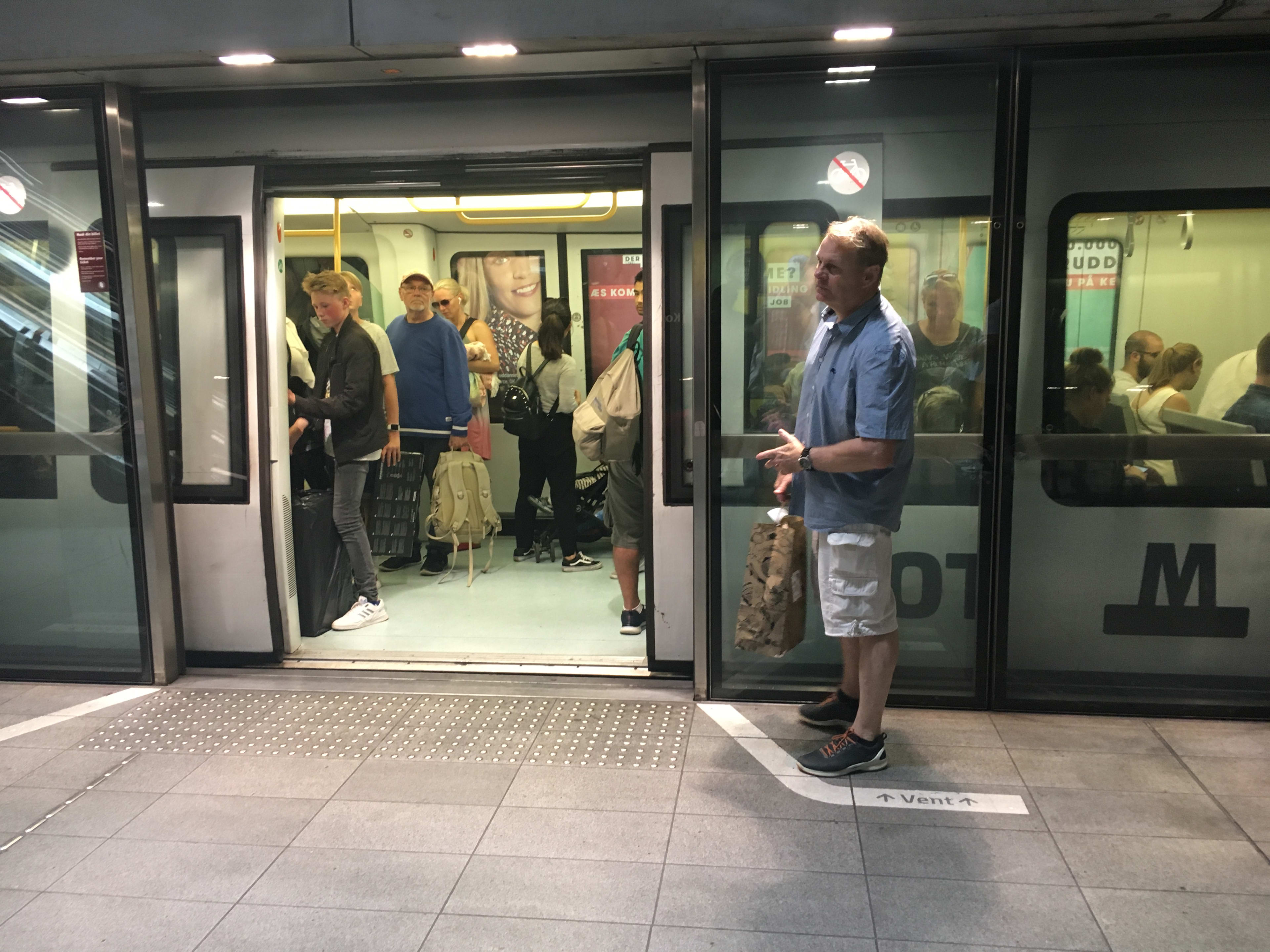Ontario Line: world of role models available for subway planners
This story is part of a series on a deeper exploration of the early stages of the Ontario Line.
Sep 17, 2019
As well as looking below, and moving just above Toronto, when preparing to build the Ontario Line subway, planners will be looking to learn lessons from other cities.
While Ontario Line promises to be leader in private-public development (P3) – the partnership behind the $28.5-billion subway program – there are lessons to be learned, say experts.
A man stands in a waiting area designed into the subway at Copenhagen. (Metrolinx photo)
For example, Mathieu Goetzke, Metrolinx chief planning officer, will be looking for proven technology used elsewhere.
“We want to make sure we are using technologies that deliver the capacity and are really robust,” he says. “The P3 will open (us) to a variety of proven solutions, whether they’ve been tested in Paris or Shanghai or London or Vancouver or Tokyo.”
In an open bidding process, Metrolinx and Infrastructure Ontario will not want to be piloting unproven systems, tools and possibilities.
“We are not going to be somebody’s demonstration project,” said Becca Nagorsky, Metrolinx director of project planning. “We want to get people to work on time.”
Metrolinx has not locked into a specific size of train, as there are many choices. Instead, it is challenging bidders to propose the best overall options for a light metro train on this unique route.
“We are focused on outcomes – that the vehicle can run really frequently and get people where they want to go,” Nagorsky explains.
Smaller, lighter trains that run more often – with lead times as low as 90 seconds between departures and arrivals – as well as automation that improves safety and efficiency, have revolutionized train travel.
“Everyone that is building is using this technology,” Goetzke says.
Automatic trains can stop at the same spot each time, combined with platform-edge doors. This allows people to get onboard in a faster, more orderly way, so trains spend less time in each station. It also makes platforms safer.
“The game is frequency,” Goetzke explains. “You want to really control your dwell times to be as short as possible.”
Visitors on Vancouver’s Canada Line have seen another fun perk of the automated trains that don’t have a driver’s cab.
“Riding in the front of a driverless train, where there is a big window in front is really cool,” Goetzke adds.
This route has linked Vancouver, Richmond and their airport since 2009 – when it was completed three months ahead of schedule and with plenty of time to spare before the 2010 Olympic Winter Games.
It was built after a competitive bidding process that demanded a travel time of 24 minutes between downtown and the airport.
With lighter trains than have been used in Toronto, the Canada Line operates with 20 fully automated two-car articulated trains, both above and below ground over 19.2 kilometres.
The trains are powered by electric motors that are different from the ones used on older lines on the area’s network, but they are all operated by the same automated control system.
Montreal is also building new routes that will operate alongside the city’s existing Metro lines with different trains.
The new Réseau express métropolitain (REM) will be a fully automated light rail transit system, with four lines running both underground and above street level over 67 kilometres, with 26 stations.
The $6.3-billion project was announced in April 2016 and it is expected to enter into service in phases between 2021 and 2023.
Station platforms will be protected by screen doors that only open after the train has arrived – making it impossible to cross the tracks or drop things on them.
They will use an automated, driverless system that is one of the safest and most reliable in the world.
“With today’s technology for automated drivers, you can have very, very safe operations,” Goetzke says. “That’s now pretty standard around the world.”
A great new add for Montreal will be capacity indicators above the screen doors to indicate which cars are full and which are not.
In all, 212 Alstom Metropolis cars have been commissioned. Each trip will use a four-car train (with a maximum capacity of 780) at peak hours and two cars at off-peak hours.
More than 5,000 similar cars are currently used around the world in cities like Paris, Shanghai, São Paulo, Dubai and Sydney. The trains for Montreal are being customized for Canadian winters.
Montreal’s trains will have heated door thresholds and floors, as well as ice protection equipment and scrapers. They’ll even be tested in a cold chamber in Austria before the first test runs in Quebec.
Technological improvements from a variety of companies will heat up the competition for bidding on the public-private partnership for the Ontario Line.
For example, Bombardier has a new high-tech hub developing and testing pioneering electronics systems for train control and signalling and control systems.
While the exact specifications for the Ontario Line will not be known until the P3 deal is signed, world class transit technology is coming to Toronto’s next iconic subway line.
